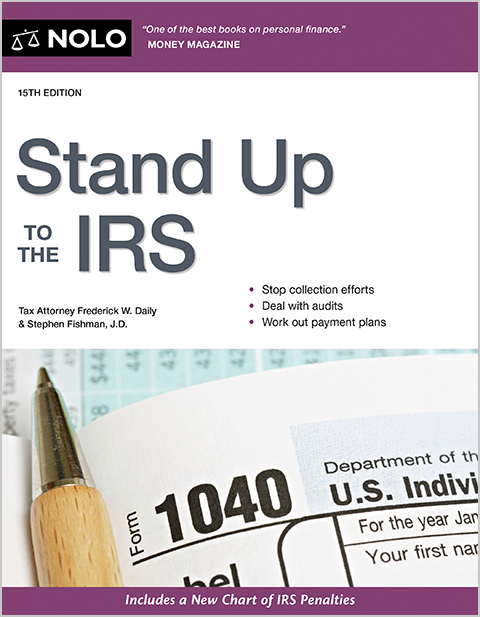It depends. Learn the rules about deducting these charitable contributions.
Making charitable donations can save you money, tax-wise. But are church donations tax deductible? Yes, but not by everybody.
- What Is a Charitable Contribution (Donation)?
- Are Charitable Contributions Tax Deductible?
- When Are Church Donations Tax Deductible?
- Only Itemizers Can Deduct Donations
- So, Are Church Donations Really Tax Deductible?
- You Must Document Your Donation
- Limitation on Charitable Cash Deductions
- Getting Help With Tax Deductions
What Is a Charitable Contribution (Donation)?
Charitable donations are gifts given in the form of property or cash to a nonprofit organization. For a donation to be charitable, the donor must receive nothing of value in exchange for the gift.
Example. You place $40 in the church's collection plate every Sunday. These contributions are tax deductible because they are charitable gifts for which you receive nothing of monetary value in return.
The words "contribution," "donation," or "gift" are typically used to refer to money or property received from a donor. These words mean essentially the same thing and are often used interchangeably. However, in the nonprofit world, people tend to use the word "donation" for small gifts (like an item of clothing) and reserve the word "contribution" for larger gifts, such as large cash gifts.
Are Charitable Contributions Tax Deductible?
Whether a donation is deductible depends on whom it is given to, when, what for, and the donor's particular tax situation. An identical contribution may be deductible by one donor but not another.
In addition, the IRS imposes restrictive rules on donations, requiring documentation and tax filings by nonprofits, charities, and donors. In some cases, the rules limit the amount that can be deducted.
When Are Church Donations Tax Deductible?
To deduct church donations, you must:
- itemize your personal deductions, and
- document your donation.
Only Itemizers Can Deduct Donations
You can only deduct a donation to a church if you itemize your personal tax deductions on IRS Schedule A. This greatly limits the actual number of people who can take such deductions.
What Does It Mean to Itemize?
Each year, taxpayers must decide whether to itemize or take the standard deduction, which is a specific amount taxpayers may deduct each year instead of itemizing. Only people who itemize their deductions can deduct their charitable contributions.
What Are Some Itemized Deductions?
Itemized deductions are deductions taxpayers are allowed to take each year for certain personal expenses, such as mortgage interest, property taxes, state income taxes, certain medical expenses, casualty and theft losses, and charitable contributions.
Again, individual taxpayers have the option to either itemize their deductions or take the standard deduction that the IRS sets each year. Check the IRS website for current standard deduction amounts.
Who Should Itemize?
Only taxpayers whose total itemized deductions are more than the standard deduction should itemize their deductions.
So, Are Church Donations Really Tax Deductible?
Again, taxpayers who don't itemize get no deduction for their charitable contributions (or any other itemized deductions). This means that, from a tax standpoint, charitable contributions are useless for people who don't itemize. Efforts to allow non-itemizers to deduct at least some of their charitable contributions have thus far failed in Congress.
So, while in theory, all charitable contributions are deductible, as a practical matter, very few taxpayers actually deduct their contributions. This is particularly true after the passage of the Tax Cuts and Jobs Act (TCJA), which roughly doubled the standard deduction. Following the enactment of the TCJA, the percentage of taxpayers who itemize is as follows:
| Taxpayers Who Itemize After the TCJA | |
| Taxpayer Income | % Who Itemize |
| less than $10,000 | 1.26% |
| $10,000 to $24,999 | 2.11% |
| $25,000 to $49,999 | 4.70% |
| $50,000 to $74,999 | 11% |
| $75,000 to $99,999 | 17% |
| $100,000 to $199,999 | 27% |
| $200,000 to $499,999 | 48% |
| $500,000 to $999,999 | 65% |
| $1,000,000 and more | 77% |
This is why statements churches and other public charities often make in fundraising solicitations, such as "your contribution is tax deductible," are misleading. It would be far more truthful to say: "Your contribution might be deductible if you itemize your deductions on your tax return."
You Must Document Your Donation
In addition, you must document your donations. Without written documentation to support a donation, you can't claim a tax deduction. There are no exceptions, even if you just put a few dollars in a collection plate each week. (So, the IRS could potentially disallow any deductions that were taken for these types of small undocumented contributions.)
What Documentation Do You Need?
What documentation you need depends on the size and nature of the donation. For donations of money under $250, all you need is documentation showing the name of the church and date and amount of the contribution. You can use a bank statement or some other documentation from your own records that substantiates that the payment was made.
If you give cash, you won't have a bank record of the donation. So, you'll need to obtain a written record of the donation from the church. It could be a receipt, letter, or any other document or writing as long as it has all the required information.
For all money donations above $250, you must get a written acknowledgement or receipt from the church. The written acknowledgment must contain:
- the church's name
- the amount of the cash contribution
- the date of the contribution, and
- a statement that no goods or services were provided by the church in return for your contribution, if that was the case.
You don't need to file this documentation with your tax return. But you must have it available if you're audited by the IRS and your deductions are questioned. Lack of proper documentation is by far the most common reason taxpayers lose valuable deductions.
Limitation on Charitable Cash Deductions
The total amount of charitable deductions you can deduct generally can't exceed a certain percentage of your adjusted gross income (AGI). Your AGI consists of a taxpayer's total income minus deductions for IRA and pension contributions and a few other things.
The limits differ depending on the organization and type of donation. For example, there is a 60% adjusted gross income ceiling on charitable cash contributions to qualified organizations, such as churches.
Example. Jasmine has $100,000 of AGI in 2024. She inherits money from her favorite aunt and decides to give $100,000 to her favorite nonprofit. Jasmine may only deduct $60,000 of her contribution this year because this amount is equal to 60% of her AGI.
For more information, see IRS Publication 526, Charitable Contributions.
Getting Help With Tax Deductions
Hiring the right tax professional is important because getting good tax help can translate into more money in your pocket. To learn more about tax deductions and credits, talk to a tax lawyer or other tax adviser.
Talk to a Tax Attorney
Need a lawyer? Start here.
How it Works
- Briefly tell us about your case
- Provide your contact information
- Choose attorneys to contact you
- What Is a Charitable Contribution (Donation)?
- Are Charitable Contributions Tax Deductible?
- When Are Church Donations Tax Deductible?
- Only Itemizers Can Deduct Donations
- So, Are Church Donations Really Tax Deductible?
- You Must Document Your Donation
- Limitation on Charitable Cash Deductions
- Getting Help With Tax Deductions
- Briefly tell us about your case
- Provide your contact information
- Choose attorneys to contact you

